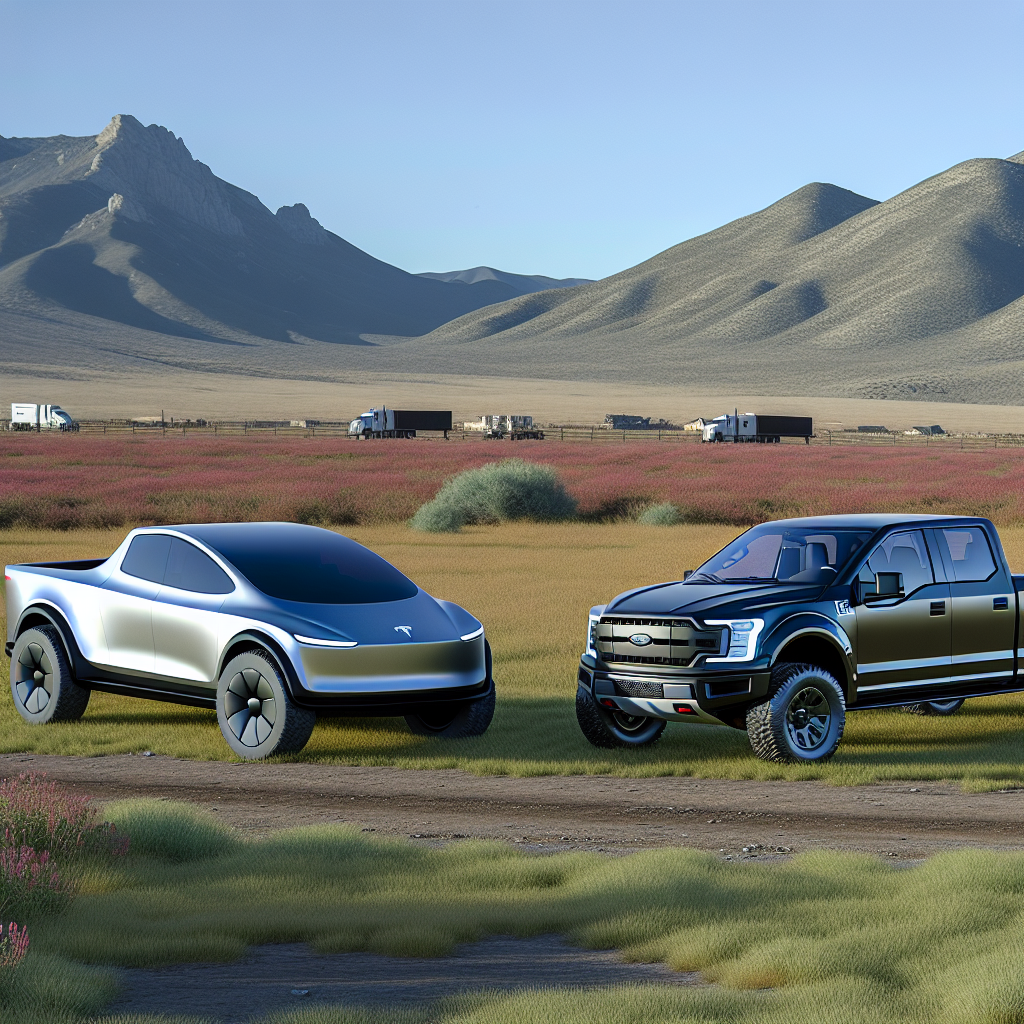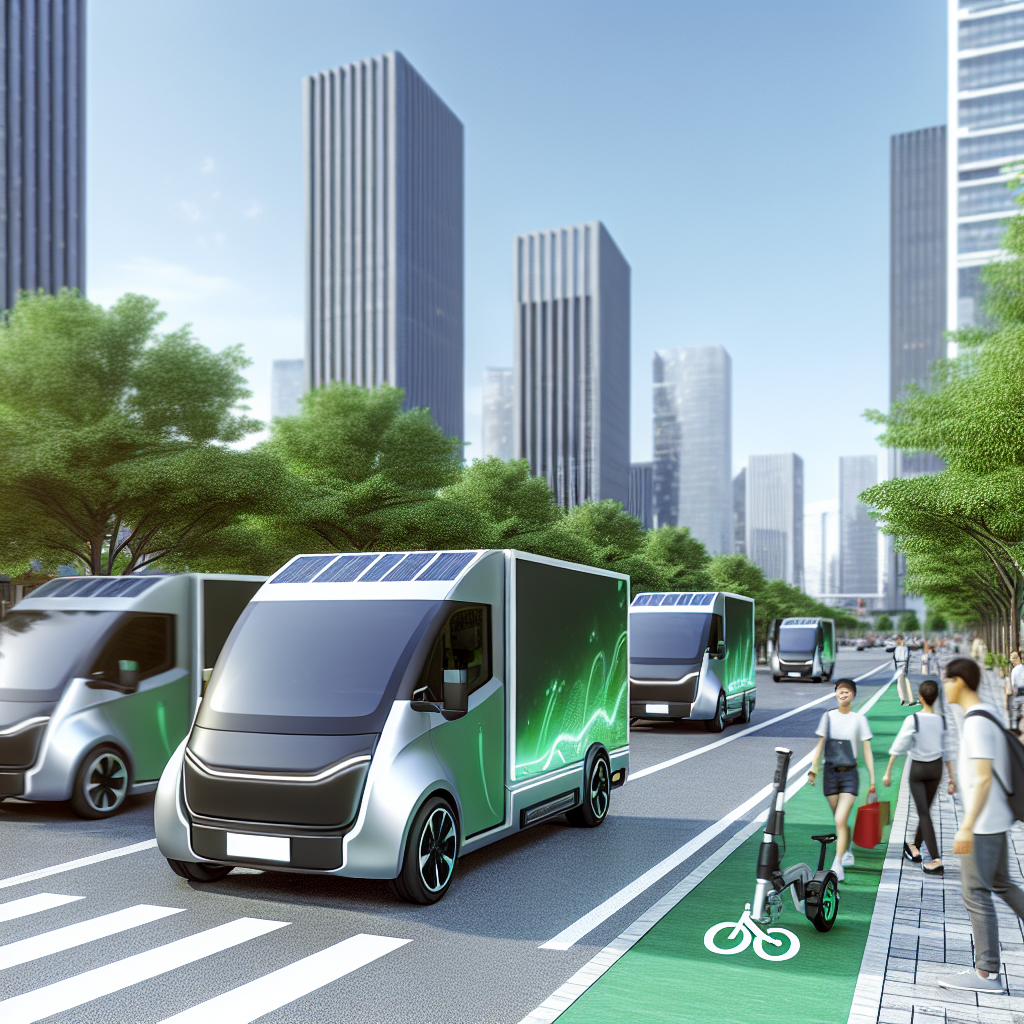In the rapidly evolving landscape of electric pickup trucks, safety technology has emerged as a pivotal concern for manufacturers and consumers alike. With the excitement surrounding models like the Tesla Cybertruck and the Ford F-150 Lightning, understanding how these vehicles perform in critical safety tests becomes essential.
Recent comparisons reveal significant insights into their crashworthiness and overall safety features, which are paramount for buyers who prioritize protection on the road. The Insurance Institute for Highway Safety (IIHS) has conducted extensive testing on both vehicles, shedding light on their strengths and weaknesses.
For example, while the Cybertruck has garnered praise for its robust performance in crash tests, the Ford F-150 Lightning has faced challenges, particularly with its rear-seat crashworthiness. This article delves into the latest safety technology evaluations of these electric pickups, exploring what potential buyers should consider when choosing their next vehicle.
User Adoption of Electric Pickup Trucks
The electric pickup truck market has experienced significant growth over recent years, with notable increases in both adoption rates and consumer interest driven by the rising emphasis on electric vehicle safety technology.
Electric Pickup Market Trends
- Market Share Growth: Electric pickup trucks made up nearly 8% of all pickup sales in the U.S. in 2023, almost doubling from just 2% in 2022.
- Sales Increase: The segment saw a remarkable 150% rise in sales during 2023 compared to the previous year, showcasing strong electric pickup market trends.
- Regional Insights: North America held about 45% of the global electric pickup truck market share in 2023, followed by Asia Pacific at 30%.
Consumer Preferences
- Interest in Electric Pickups: A survey from 2021 indicated that 43% of current pickup owners anticipated purchasing an electric pickup within the next decade, a notable increase from 34% in 2020. Millennials led the interest with 50% considering an electric pickup.
- Safety Preferences: While there is a growing demand for advanced safety features such as automatic emergency braking, lane-keeping assist, and adaptive cruise control, specific statistics on preferences for safety features in electric pickups are scarce, especially in the context of electric vehicle safety technology.
Recent Developments
- Production Adjustments: In early 2024, Ford reduced the production of the F-150 Lightning due to weaker-than-expected sales growth, impacting around 1,400 workers.
- Market Dynamics: Tesla’s Cybertruck surpassed Ford’s F-150 Lightning in sales in May 2024, highlighting competitive shifts within the marketplace.
- Delayed Production: General Motors also delayed the production start of its electric pickups at the Orion Township plant to late 2025, reflecting the challenges posed by slowing EV demand.
In conclusion, while the electric pickup market has seen considerable growth, recent trends suggest it may be facing a slowdown. Consumer interest remains robust, particularly among younger demographics, and safety features—including electric vehicle safety technology—are becoming increasingly important in their purchasing decisions.
Comparison of Safety Features and Crash Test Results
| Model | Crashworthiness | Headlight Performance | Child Seat Anchor Rating | Safety Features |
|---|---|---|---|---|
| Tesla Cybertruck | Good | Glare issues noted | Excellent | Automatic emergency braking, lane-keeping assist |
| Ford F-150 Lightning | Poor (rear seat), Good (front) | Good, but slightly below Cybertruck | Average | Seat belt reminders praised, lacks some advanced features |
| Rivian R1T | Good | Above average | Good | Split view mirrors, rollover protection |
| GMC Hummer EV | Good | Very good, no glare issues | Above average | Advanced driver assistance systems |
| Toyota Tundra | Acceptable | Good | Fair | Adaptive cruise control |
This table highlights the critical safety evaluations and features of electric pickups, giving potential buyers an overview of which might best suit their safety needs. It’s essential to consider both crash test results and the array of safety technologies each vehicle provides as these factors significantly impact overall protection on the road.
IIHS Crash Test Results
The Insurance Institute for Highway Safety (IIHS) conducted extensive evaluations on the 2025 Tesla Cybertruck and the 2025 Ford F-150 Lightning, focusing on various safety measures including crashworthiness, crash avoidance, and the ease of use of child seat anchors. Here’s a closer look at the results and methodologies used in these tests.
2025 Tesla Cybertruck
- Crashworthiness: The Cybertruck received a Good rating in the moderate overlap front crash test, indicating strong protection for both front and rear occupants. This rating applies to models built after April 2025, which saw updates to the front underbody structure (IIHS).
- Crash Avoidance & Mitigation: The Cybertruck faced challenges with headlight performance, rated as Poor, mainly due to glare issues, which can be detrimental to other drivers. IIHS. However, its front crash prevention system achieved a Good rating, successfully mitigating pedestrian risks as noted in recent evaluations (carscoops.com).
- Child Restraint System: The Cybertruck’s seat belt reminders were rated Marginal, and it received an Acceptable rating for LATCH ease of use, which assesses how well the vehicle’s child seat anchors facilitate proper installation of child restraints in the rear seats (IIHS).
2025 Ford F-150 Lightning
- Crashworthiness: The Ford F-150 Lightning received a Poor rating in the moderate overlap front crash test. Testing data showed that while it provided good protection for the driver, rear occupant measures indicated a high risk of chest and head injuries after the collision (IIHS).
- Crash Avoidance & Mitigation: The headlights of the F-150 Lightning earned an Acceptable rating, performing better than those of the Cybertruck in terms of contributing to safer nighttime driving conditions (IIHS). The front crash prevention system also scored Good in pedestrian evaluations.
- Child Restraint System: The F-150 Lightning received a Good rating for its seat belt reminders, indicating effective reminders for vehicle occupants. However, its LATCH ease-of-use rating was marked as Marginal, suggesting that parents may experience difficulties installing child seats (IIHS).
Conclusion
These results provide critical insights for consumers evaluating the safety of electric pickups. While the Tesla Cybertruck showcased superior crashworthiness and advanced crash prevention technology, the Ford F-150 Lightning offered notable child seat anchor convenience. These differences highlight essential considerations for potential buyers, especially families prioritizing child safety in vehicle selection.
Expert Opinions and Industry Commentary
In recent assessments, automotive safety experts have provided significant insights into the crash safety of the Tesla Cybertruck and the Ford F-150 Lightning. Their opinions highlight both consumer concerns and expectations regarding these electric pickups.
Tesla Cybertruck
- Structural Concerns: Adrian Lund, the former president of the Insurance Institute for Highway Safety (IIHS), has raised questions regarding the Cybertruck’s stiff stainless-steel exoskeleton. He indicated that this rigidity might lead to more severe injuries to pedestrians and cyclists in collision scenarios (investing.com).
- Crash Test Insights: The National Highway Traffic Safety Administration (NHTSA) awarded the Cybertruck a five-star safety rating. Nonetheless, Julia Griswold, a director at the University of California, Berkeley, expressed caution after analyzing Tesla’s crash tests. She reiterated that the vehicle’s weight and acceleration could increase risks for non-occupants (carsnewswire.com).
- Autonomous Driving Risks: Recently, a Cybertruck using self-driving technology was involved in a crash due to its failure to navigate a lane ending. Saber Fallah, a professor focused on Safe AI and Autonomy, noted that Tesla’s software might struggle with scenarios that require adaptive decision-making (reuters.com).
Ford F-150 Lightning
- Reliability Concerns: According to Consumer Reports, the 2022 Ford F-150 Lightning has been rated as less reliable than the average new vehicle, with multiple recalls due to electrical and hardware issues (consumerreports.org).
- Battery Safety Issues: Ford had to pause production of the F-150 Lightning due to a battery fire incident during a pre-delivery inspection, prompting investigations and safety enhancements in battery production (apnews.com).
Consumer Expectations
- Tesla Cybertruck: While many consumers admire the innovative design and high safety ratings, concerns remain regarding the number of recalls, particularly issues like fevered incidents with electrically operated doors and shatterproof windows (en.wikipedia.org).
- Ford F-150 Lightning: The traditional design of the Ford F-150 Lightning has garnered consumer appreciation. However, the “poor” crash test rating from IIHS for rear passenger safety has raised flags among prospective buyers (iihs.org).
In summary, expert commentary illustrates the necessity for both Tesla and Ford to continue enhancing safety technologies and addressing consumer concerns to maintain confidence in their electric pickup offerings.
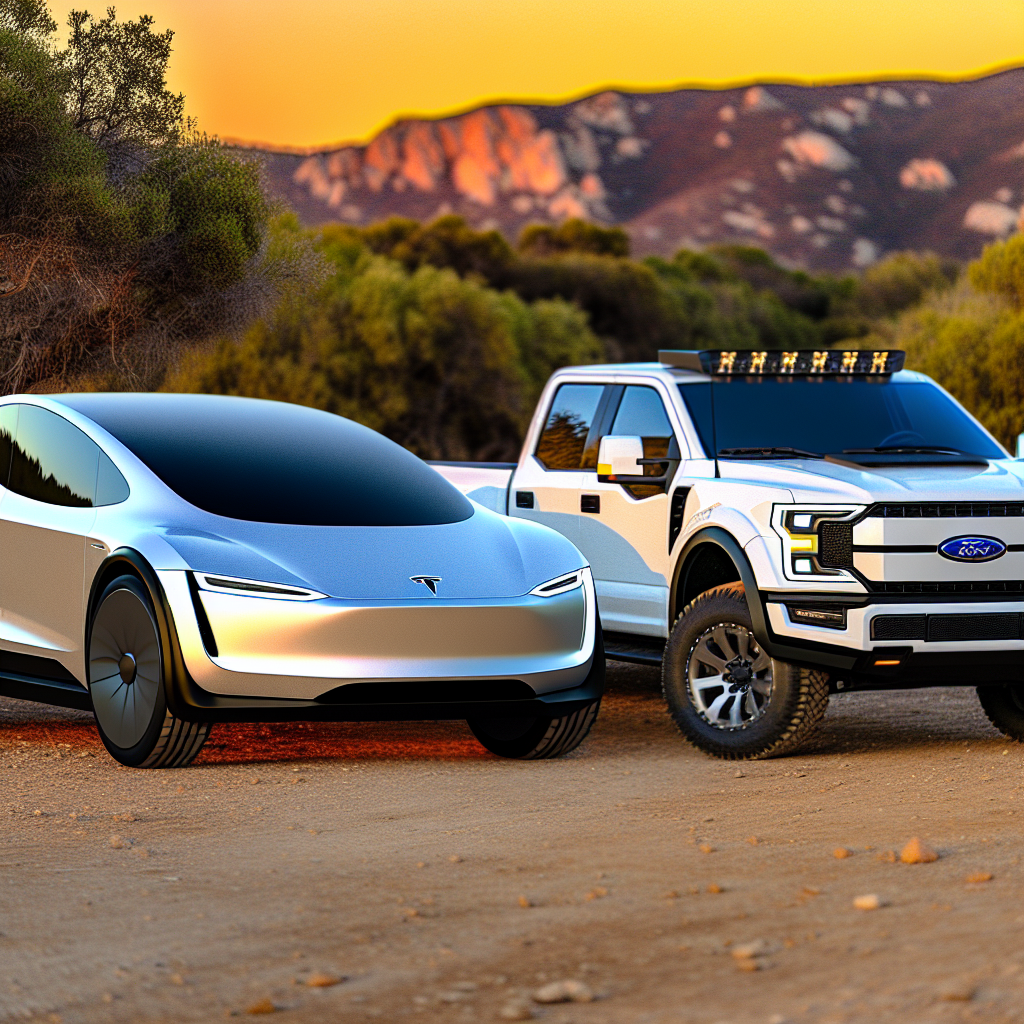
Expert Opinions and Industry Commentary on Crash Safety
In recent assessments, automotive safety experts have provided significant insights into the crash safety of the Tesla Cybertruck and the Ford F-150 Lightning. Their opinions highlight both consumer concerns and expectations regarding these electric pickups.
Tesla Cybertruck
- Structural Concerns: Adrian Lund, the former president of the Insurance Institute for Highway Safety (IIHS), has raised questions regarding the Cybertruck’s stiff stainless-steel exoskeleton. He indicated that this rigidity might lead to more severe injuries to pedestrians and cyclists in collision scenarios [investing.com].
- Crash Test Insights: The National Highway Traffic Safety Administration (NHTSA) awarded the Cybertruck a five-star safety rating. Nonetheless, Julia Griswold, a director at the University of California, Berkeley, expressed caution after analyzing Tesla’s crash tests. She reiterated that the vehicle’s weight and acceleration could increase risks for non-occupants [carsnewswire.com].
- Autonomous Driving Risks: Recently, a Cybertruck using self-driving technology was involved in a crash due to its failure to navigate a lane ending. Saber Fallah, a professor focused on Safe AI and Autonomy, noted that Tesla’s software might struggle with scenarios that require adaptive decision-making [reuters.com].
Ford F-150 Lightning
- Reliability Concerns: According to Consumer Reports, the 2022 Ford F-150 Lightning has been rated as less reliable than the average new vehicle, with multiple recalls due to electrical and hardware issues [consumerreports.org].
- Battery Safety Issues: Ford had to pause production of the F-150 Lightning due to a battery fire incident during a pre-delivery inspection, prompting investigations and safety enhancements in battery production [apnews.com].
Consumer Expectations
- Tesla Cybertruck: While many consumers admire the innovative design and high safety ratings, concerns remain regarding the number of recalls, particularly issues like fevered incidents with electrically operated doors and shatterproof windows [en.wikipedia.org].
- Ford F-150 Lightning: The traditional design of the Ford F-150 Lightning has garnered consumer appreciation. However, the “poor” crash test rating from IIHS for rear passenger safety has raised flags among prospective buyers [iihs.org].
In summary, expert commentary illustrates the necessity for both Tesla and Ford to continue enhancing safety technologies and addressing consumer concerns to maintain confidence in their electric pickup offerings.
Comparison of Innovative Safety Technology in Tesla Cybertruck and Ford F-150 Lightning
When comparing the innovative safety technologies of the Tesla Cybertruck and the Ford F-150 Lightning, it is clear that both vehicles prioritize safety, albeit through different approaches with unique implications for real-world safety.
Tesla Cybertruck
- Structural Design: The Cybertruck features a stainless steel exoskeleton designed to withstand significant impacts. This robust construction contributes to superior crash test ratings for occupant protection but has raised valid concerns regarding pedestrian safety due to the vehicle’s sharp edges and limited crumple zones. The Cybertruck’s angular design might be more harmful to non-occupants in collision scenarios.
- Crash Test Performance: The Cybertruck has garnered a five-star overall safety rating from the National Highway Traffic Safety Administration (NHTSA), showcasing exceptional performance in frontal and side-impact tests. However, concerns about its headlight glare and potential risks for pedestrians have been noted. The rigidity of the Cybertruck may also lead to higher risks for pedestrians compared to traditional designs. [source]
- Real-World Incidents: The Cybertruck has faced multiple recalls addressing issues linked to its exterior panels and rearview camera activation, which highlight the ongoing challenges of managing safety while innovating in design. [source]
Ford F-150 Lightning
- Structural Design: The F-150 Lightning leverages an aluminum body and uses extensive crumple zones, aimed at absorbing impact energy and minimizing injuries to both occupants and pedestrians. This design philosophy aims to enhance safety while still delivering robust performance.
- Crash Test Performance: Although the NHTSA ratings for the F-150 Lightning are less documented, it is built on a platform associated with high safety ratings. The Insurance Institute for Highway Safety (IIHS) rated the Lightning poorly for rear-passenger safety in collision scenarios, indicating areas needing improvement.
- Real-World Incidents: Ford’s approach includes a commitment to resolving issues proactively, as demonstrated by its decision to halt shipments temporarily for quality checks following potential safety concerns. [source]
Conclusion
In summary, the Tesla Cybertruck and Ford F-150 Lightning both showcase innovative safety technologies, though they differ significantly in execution and potential impact on real-world safety. The Cybertruck excels in occupant protection but poses challenges for pedestrian safety due to its rigid design. The F-150 Lightning emphasizes energy absorption for greater occupants and pedestrian safety, reflecting a more traditional safety philosophy. Future improvements in safety features and continued evaluations will be essential in enhancing the safety profiles of both vehicles as they evolve in the competitive electric pickup market.
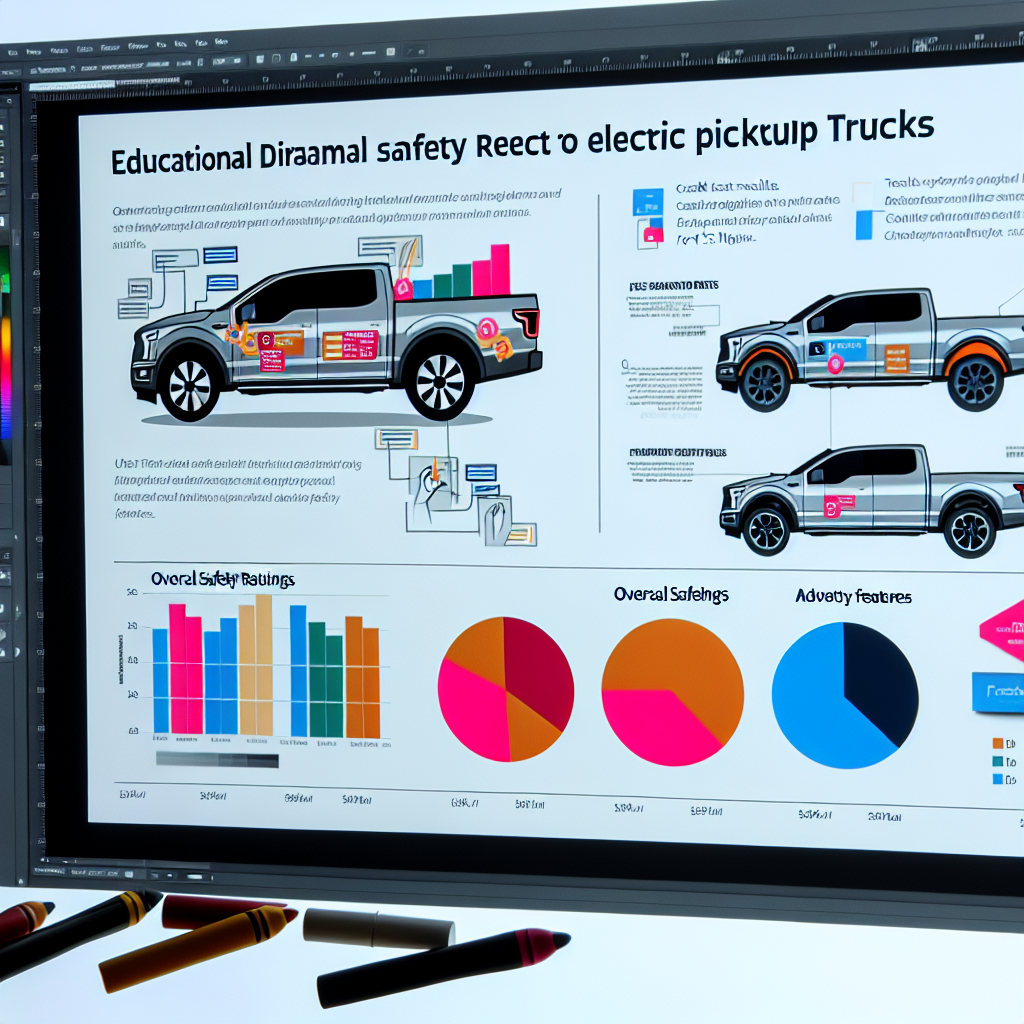
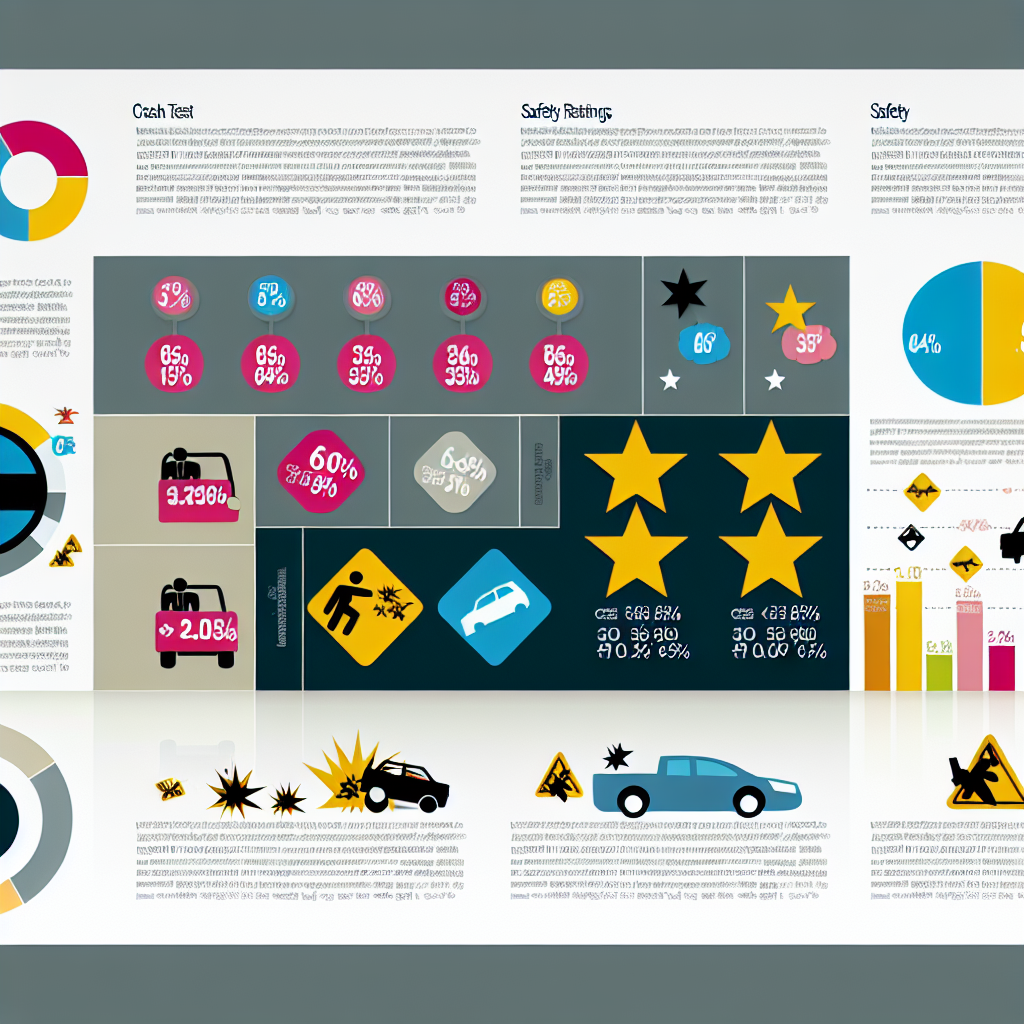
In conclusion, this article has explored significant findings regarding safety technology in electric pickup trucks, particularly focusing on the Tesla Cybertruck and Ford F-150 Lightning. The recent crash test results conducted by the IIHS have illuminated the strengths and weaknesses of these vehicles, indicating that while the Cybertruck boasts superior crashworthiness and advanced safety features, the F-150 Lightning has room for improvement in certain areas, particularly its rear-seat safety ratings. The importance of safety technology in electric trucks cannot be overstated; it not only protects occupants but extends to ensuring the safety of pedestrians as well.
For consumers considering investing in reliable electric pickup options, understanding these safety evaluations becomes crucial. The choice between models should reflect not only personal needs and preferences but also the commitment to safety that each vehicle offers. As the market evolves, consumers must remain informed about advancements in safety technology, which will ultimately influence their purchasing decisions and ensure they choose vehicles that prioritize their safety on the road.
Expert Quotes on Electric Pickup Truck Safety
Recent evaluations by the Insurance Institute for Highway Safety (IIHS) and insights from industry experts shed light on the safety features and ratings of the Tesla Cybertruck and Ford F-150 Lightning.
Tesla Cybertruck
- According to the IIHS, the Cybertruck received a Good rating in the moderate overlap front crash test, indicating excellent protection for both the driver and rear passengers. It also scored a Good in pedestrian crash prevention but faced criticism for its headlights, which were rated as Poor due to excessive glare. “The Cybertruck’s structure offers strong occupant protection, but the design raises some pedestrian safety concerns,” remarked Adrian Lund, former IIHS president [source].
- Additionally, the NHTSA awarded the Cybertruck a five-star safety rating, although concerns remain about its rigid design compromising pedestrian safety. “While it performs well in controlled tests, real-world implications of its sharp edges and weight could pose risks for non-occupants,” stated Julia Griswold from UC Berkeley [source].
Ford F-150 Lightning
- The IIHS rated the F-150 Lightning as Poor in the moderate overlap front crash test, an area that has raised attention among consumers. “The F-150 Lightning provides good images of driver protection, yet the rear passenger ratings indicate significant risk factors which need addressing,” mentioned the IIHS [source].
- In a broader perspective, the Lightning has been equipped with advanced safety technologies, including the Ford Co-Pilot360 suite. “Ford emphasizes robust safety features and continues to enhance its technology for better collision avoidance,” said a representative of Ford [source]. However, a Consumer Reports review pointed out reliability concerns, stating, “While safety features are comprehensive, their reliability remains variable, affecting consumer trust in the F-150 Lightning’s overall dependability.” [source].
Conclusion
The insights from IIHS evaluations and expert commentary on the Tesla Cybertruck and Ford F-150 Lightning underline the critical importance of safety technology in electric pickups. Both vehicles offer advanced safety features, though their designs come with unique implications for occupant and pedestrian safety. Recognizing these nuances can help consumers make informed decisions when choosing their next electric vehicle.
Improved Transitions Between IIHS Crash Test Results and Expert Opinions
To understand the significance of the IIHS crash test results, it’s vital to recognize how these findings resonate with expert opinions and industry commentary. The evaluations of the 2025 Tesla Cybertruck and Ford F-150 Lightning not only highlight the vehicles’ performance in controlled tests but also reflect broader implications for real-world safety. For instance, while the Cybertruck received a Good rating in crashworthiness, there is notable concern from experts regarding its potential risks to pedestrians due to its rigid design. Similarly, the F-150 Lightning’s Poor rating for rear passenger safety has prompted professionals to call for enhanced safety measures. This connection between the crash test results and expert commentary allows consumers to gain a comprehensive understanding of what these evaluations mean for their safety.
Transitioning into expert opinions, Adrian Lund’s concerns about the Cybertruck’s structural rigidity echo the very test results that showcase its robustness yet signal a caution regarding its interactions with non-occupants. In discussing the F-150 Lightning, industry insights into its traditional design and inherent safety risks underscore the critical nature of these evaluations. The intersection of empirical safety data and expert analysis emphasizes the necessity of viewing crash test outcomes as not just numerical ratings but as reflections of potential real-world scenarios that affect vehicle occupants and pedestrians alike.
By threading together the findings from IIHS evaluations with expert insights, prospective buyers can better assess the electric pickups’ safety and reliability—essential considerations in their purchasing decisions.
Readability Improvements
Understanding the safety technology in electric pickup trucks is crucial for consumers. The recent crash test results provide important insights on two models in particular—the Tesla Cybertruck and Ford F-150 Lightning. These vehicles have been evaluated based on their crashworthiness and other safety features. It is essential to break down the information so that potential buyers can easily comprehend the implications of these results.
Firstly, while the Tesla Cybertruck achieved high ratings in various crash tests, concerns about pedestrian safety have been raised. The Cybertruck’s rigid structure, although protective for occupants, could present dangers to pedestrians in collision scenarios. Experts have highlighted the need for consumers to be cautious about this factor.
In contrast, the Ford F-150 Lightning faced challenges in its safety evaluations, particularly regarding rear-passenger safety. The Poor rating it received indicates that there are significant risks for passengers in the rear seats during a crash. This rating has led to calls for enhanced safety measures from both the manufacturer and safety advocates.
As consumers navigate the marketplace for electric pickups, understanding these evaluations becomes increasingly important. The details must be accessible and clear so that they can effectively influence purchasing decisions. By simplifying and clarifying the discussed points, consumers can make informed choices about their electric vehicle purchases based on safety.
| Survey Feature | Consumer Preference (%) |
|---|---|
| Automatic Emergency Braking | 78 |
| Lane-Keeping Assist | 65 |
| Adaptive Cruise Control | 61 |
| Blind Spot Monitoring | 57 |
| Collision Detection System | 73 |
| Pedestrian Detection | 54 |
| Rear Cross-Traffic Alert | 49 |
| 360-Degree Camera | 48 |
This table provides a comparison of consumer preferences for various safety features based on recent survey results. Understanding these preferences can help manufacturers improve their offerings and cater to the safety demands of potential electric pickup buyers. The increasing emphasis on safety technology underscores the competitive nature of the electric pickup market, influencing purchasing decisions among consumers.
